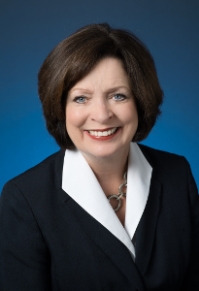Budget amendments include reduction in payment percentage to KanCare companies
by Ashley Booker, KHI News Service
Gov. Sam Brownback on Thursday submitted a budget amendment that would reduce state general fund expenditures, including some to health programs, by $72 million to help balance budgets in the two coming fiscal years.
Revenue estimates for the next fiscal year were revised downward Monday, increasing a gap between tax revenue and proposed expenses.
The $400 million state general fund revenue shortfall for the next fiscal year, even after one-time transfers from other funds, was announced ahead of Thursday’s House Appropriations Committee meeting. Lawmakers expressed concern.
“It seems almost incomprehensible that we ended up as far behind this year as we are,” said Rep. Don Hill, a Republican from Emporia
When the full Legislature returns April 29 to the Capitol, legislators will be tasked with approving tax increases and spending reductions to balance the 2016 and 2017 fiscal year budgets.
Brownback’s proposed tax adjustments include slowing income tax cuts and increasing state liquor and cigarette taxes, which are projected to bring in $210 million of revenue.
Shawn Sullivan, Brownback’s budget director, said the governor still plans to seek alcohol and tobacco taxes as part of a revenue plan to fill the budget hole, though legislators have not warmed to the idea.
“We are having conversations with legislators on the tax revenue plan as a whole, and those will continue over the next week or two, particularly when they get back,” Sullivan said.
He said conversations about the alcohol and tobacco tax increases haven’t been high in number because legislator didn’t have updated revenue numbers until recently. With a final revenue target now in mind, these conversations most likely will increase.
In total, there were 11 budget amendments introduced Thursday, including a reduction in Medicaid spending and increased funds for repairs at Osawatomie State Hospital.
Nearly $33 million would come from reducing expenditures for the state’s Medicaid program, known as KanCare, which since 2013 has been administered by three private insurance companies that have contracts with the state.
When researchers estimated what it would cost to pay the companies in the coming fiscal year, they predicted a 3.5 percent increase in payments, but the rate has been updated to 3 percent.
Rep. Ron Ryckman Jr., a Republican from Olathe and chairman of the Appropriations Committee, said that was the good news of the day.
Sullivan said new estimates mean about $23 million less than expected will have to be transferred from the state general fund to backfill a Kansas Department of Health and Environment fund that was drained to help balance the current fiscal year budget.
He said the state could save additional money for the general fund by increasing the rate hospitals pay into a “health care access” fund that brings in federal matching money from 1.83 percent of the hospitals’ 2010 inpatient revenue to 2.55 percent. Sullivan said the access fund is currently being subsidized by the general fund and the rate increase would make that no longer necessary.
Rep. Kathy Wolfe Moore, a Democrat from Kansas City, Kan., said she had concerns that some providers weren’t aware of the latter proposal until the last couple of days.
Hospitals have said their financial picture is becoming more difficult because the state has not expanded Medicaid, and “this is kind of insult to injury on top of that,” Wolfe Moore said.

Sullivan said the hospitals were informed three to four weeks ago that the governor’s office was looking into increasing the fee.
Another budget amendment involves renovations at Osawatomie State Hospital. The renovations were mandated by the federal Centers for Medicare and Medicaid Services after a recent survey of the facility.
During the renovation project, occupancy at the 206-bed facility will be capped at 147 patients. Osawatomie State Hospital is the larger of two state-run inpatient facilities for adults with serious and persistent mental illnesses.
In fiscal year 2016, Brownback’s administration proposes to provide $3.4 million to ensure community mental health resources will be able to take care of patients who are unable to be housed at Osawatomie during the building project.
Wolfe Moore said she and Wyandotte County officials are concerned where exactly the patients will go.
Wyandotte County officials are struggling to figure out where patients will be placed, Wolfe Moore said, because “those communities, their hospital mental health centers just aren’t designed to take care of those most dangerous or most of the involuntary patients.”
“Our fear is they are going to end up in the jails, which will be very sad,” she said, adding jails don’t provide adequate treatment for the mentally ill.
Sullivan said there are a couple psychiatric hospitals that serve as an overflow for Larned State Hospital and Osawatomie, and those will help, along with additional services.
Once renovations are complete, Osawatomie will return to its 206-bed capacity.
Wolfe Moore said Kansas Department for Aging and Disability Services representatives will be coming to Wyandotte County to discuss where patients will be placed and how community programs will be paid.
“There’s probably 50 questions that we need to ask,” she said.
The nonprofit KHI News Service is an editorially independent initiative of the Kansas Health Institute and a partner in the Heartland Health Monitor reporting collaboration. All stories and photos may be republished at no cost with proper attribution and a link back to KHI.org when a story is reposted online.
– See more at http://www.khi.org/news/article/brownback-administration-unveils-72-million-in-spending-changes#sthash.rB62Vj12.dpuf
